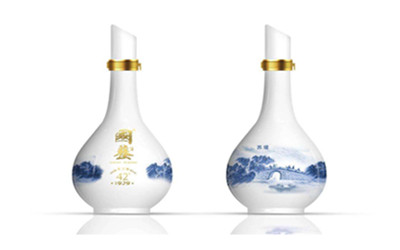
Dehua porcelain is from Dehua County of Fujian Province. Dehua Porcelain sculpture firing and manufacturing skills are excellent in the world, which can be manufactured in two ways: one is direct forming with kaolin of high quality and the other is casting after mold fabrication or rubbing for forming. Whether to glaze or not is generally determined according to needs after the clay body is dry. Then the biscuit is placed into the kiln and fired into a finished product at high temperature above 1000℃.
The production of Dehua porcelain emerged in Tang and Song Dynasties, flourished in Ming and
Qing Dynasties. Manufacturing skills are unique and inherited till now. He Chaozong, a handicraftsman of Dehua porcelain in Ming Dynasty developed exquisite Dehua porcelain carvings with local kaolin of high quality through eight skills, namely kneading, shaping, carving, engraving, scraping, joining and attaching, etc.
With the same status as important as silk and tea as exports from China, Dehua porcelain has won a world-wide reputation, which contributes to the spread of porcelain manufacturing skills and cultural exchange between China and other countries.
Dehua porcelain has been collected by people in European countries for its unique artistic style. It is thus acclaimed as "oriental art treasure" and had already been exported to Europe in
Qing Dynasty.
Since late Qing Dynasty, Dehua porcelain industry has been declining.
Handicraftsmen such as Su Xuejin and Xu Youyi, however, were still engaged in this field. Their products won gold medals at international expos in Panama, UK and Japan.
After the founding of the People's Republic of
China, Dehua porcelain industry has revived and there have appeared many young talents who manage to make innovations on the basis of excellent skills and styles of their predecessors and to upgrade Dehua porcelain firing and manufacturing skills.
Dehua porcelain, famous for its white porcelain statues, is an art treasure in Chinese ceramic. In recent years, due to the changes in lifestyle and the impact of foreign cultures, fewer young people are willing to devote themselves to this traditional industry, as the learning cycle is long and benefits come slow. Most handicraftsmen are 60 years old now and there are concerns that the skills will disappear once this generation of handicraftsmen pass away. Therefore attention and support from relevant authorities are in urgent need.

 Dehua porcelain is from Dehua County of Fujian Province. Dehua Porcelain sculpture firing and manufacturing skills are excellent in the world, which can be manufactured in two ways: one is direct forming with kaolin of high quality and the other is casting after mold fabrication or rubbing for forming. Whether to glaze or not is generally determined according to needs after the clay body is dry. Then the biscuit is placed into the kiln and fired into a finished product at high temperature above 1000℃.
Dehua porcelain is from Dehua County of Fujian Province. Dehua Porcelain sculpture firing and manufacturing skills are excellent in the world, which can be manufactured in two ways: one is direct forming with kaolin of high quality and the other is casting after mold fabrication or rubbing for forming. Whether to glaze or not is generally determined according to needs after the clay body is dry. Then the biscuit is placed into the kiln and fired into a finished product at high temperature above 1000℃. Ask Questions ?
Ask Questions ?